
It might be argued that I should be using the new Nokia 808 PureView for the comparison, but then that hasn't arrived in the UK yet, and besides, a super-detailed camera test between the 808 and any other phone on the planet would be a bit pointless and rather one sided.
With advances in sensor sensitivity (including back side illumination) and a huge image processor, the Galaxy S III's camera should be getting up to the same ball park as the N8, even though the latter has a sensor that's three times the size (in terms of area).
But there's only one way to find out. Will physics or modernity win out?
Wide view, sunshine
Here's the overall test scene, I was focussing on the small 'Rescue' sign beneath the plane's cockpit:
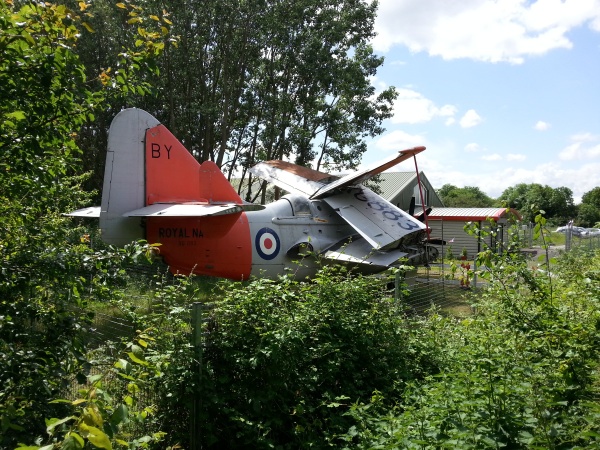
With the same scene captured on the Nokia N8 and Samsung Galaxy S III, I now cropped in to an appropriate level of detail such that we can see a difference in the shots. N8 on top, SGS III on the bottom:
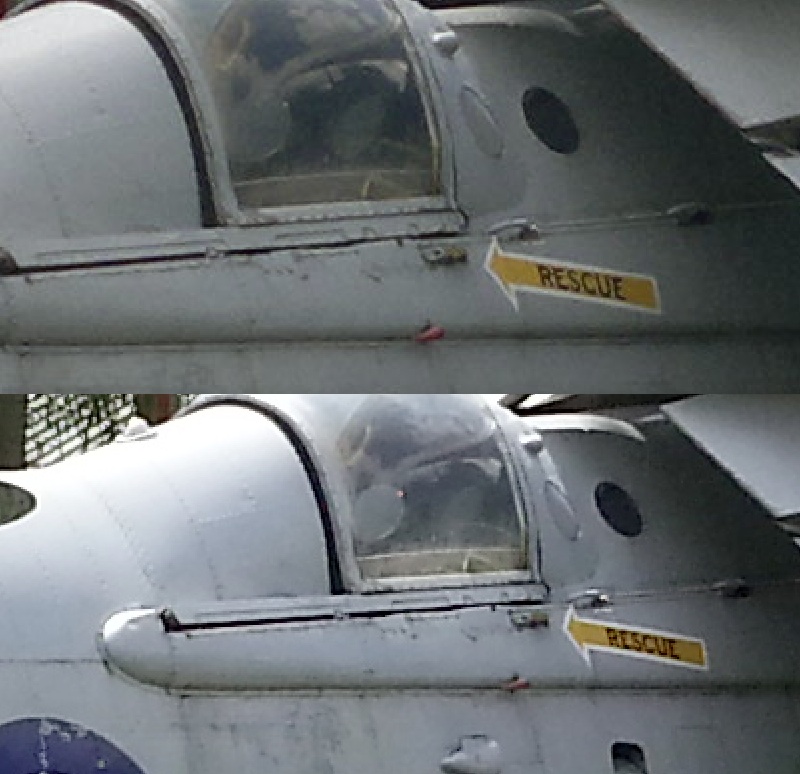
The N8's extra resolution is key here, plus Samsung does seem to still be applying a lot of post-processing to its images - noise reduction, colour enhancement and then sharpening, roughly in that order, while the N8 doesn't apply any processing whatsoever - you're seeing the image more or less as it comes off the sensor.
It's noticeable that in all the outdoor shots in this feature, the photos looked better at 'Facebook' size (VGA, or a little bigger) from the Galaxy S III because of the processing that's done to improve this very use case. But using the photos at higher resolutions or cropping to look at an detail shows a different story.
Macro, sunshine
A challenging little macro, with extremes of sunshine and shade:
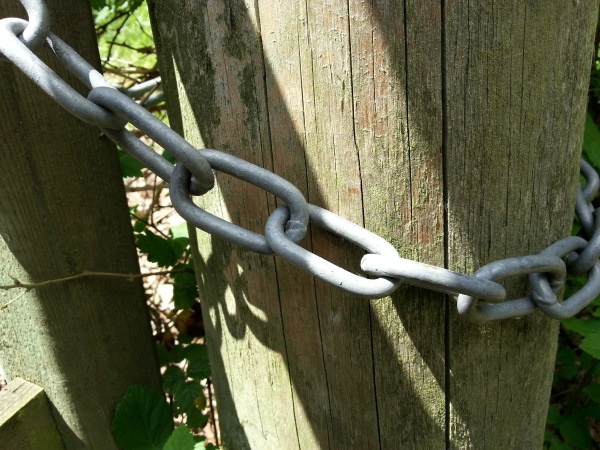
With the same scene captured on the Nokia N8 and Samsung Galaxy S III, I now cropped in to an appropriate level of detail such that we can see a difference in the shots. N8 on top, SGS III on the bottom:
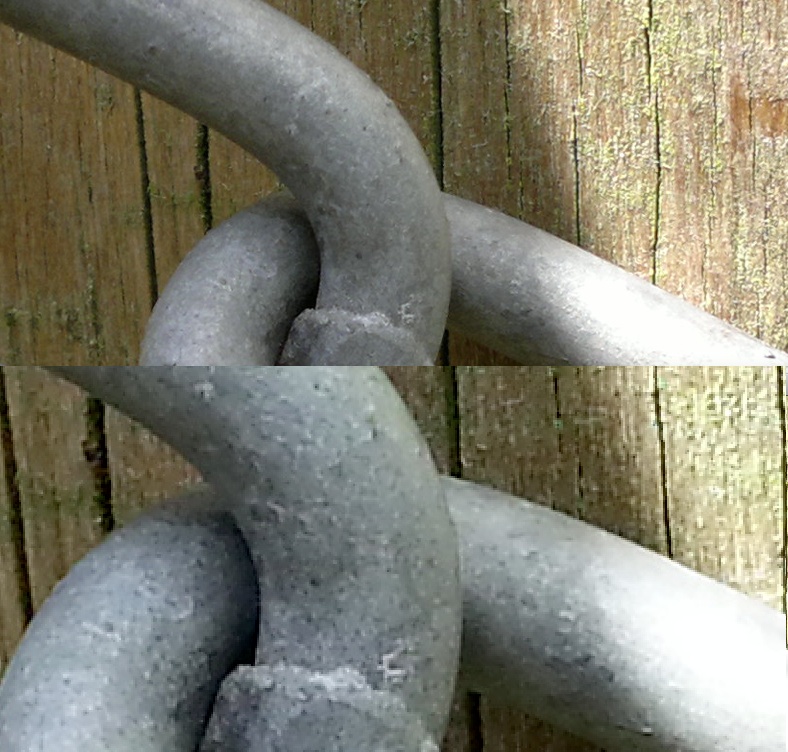
It's hard, by the way, to crop to show roughly the same field of view without further degrading one of the photos, since they started out at different original resolutions. The detail on the fence behind the chain is particularly superior in the N8 shot, with the chain detail being mainly artefacts on the SGS III version and (arguably) mainly actual texture in the N8 one.
Macro, shade
Heading away from the sun into a pleasant woodland glade, I tried an arty macro shot:

With the same scene captured on the Nokia N8 and Samsung Galaxy S III, I now cropped in to an appropriate level of detail such that we can see a difference in the shots. N8 on top, SGS III on the bottom:
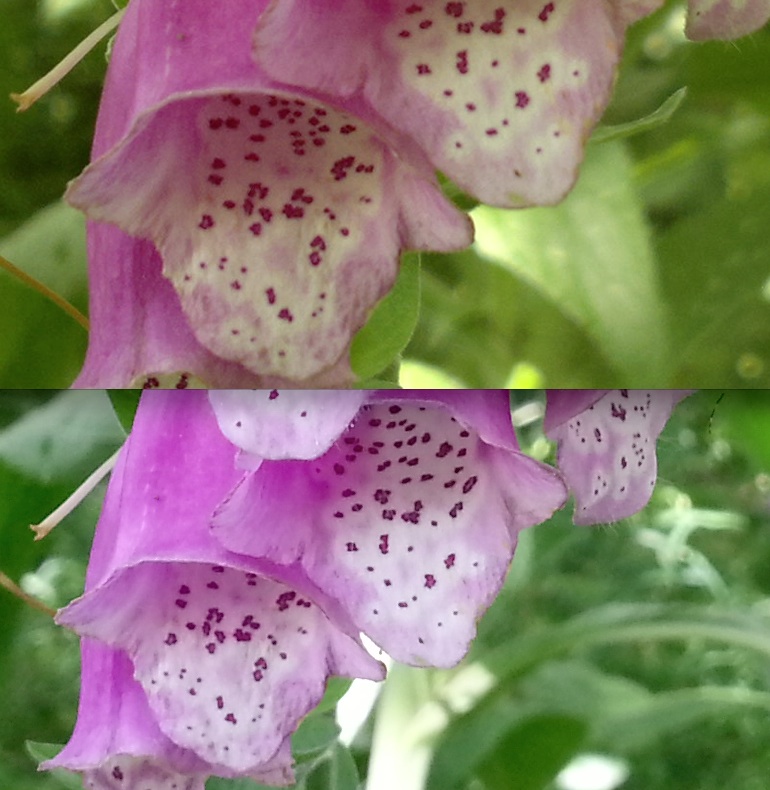
The extra processing on the Galaxy S III version makes its photo look better at first, but I'd argue that the edges are too sharp for all its detail, and that the coloured areas show post-processing artefacts as much as actual texture.
Flash-lit, static subject
A favourite pitch-dark test shot of mine, my family's nail varnish 'wall':
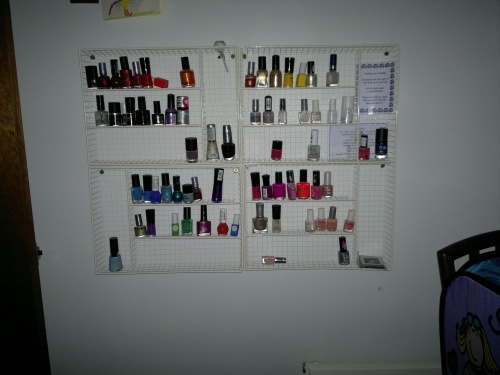
With the same scene captured on the Nokia N8 and Samsung Galaxy S III, I now cropped in to an appropriate level of detail such that we can see a difference in the shots. N8 on top, SGS III on the bottom:
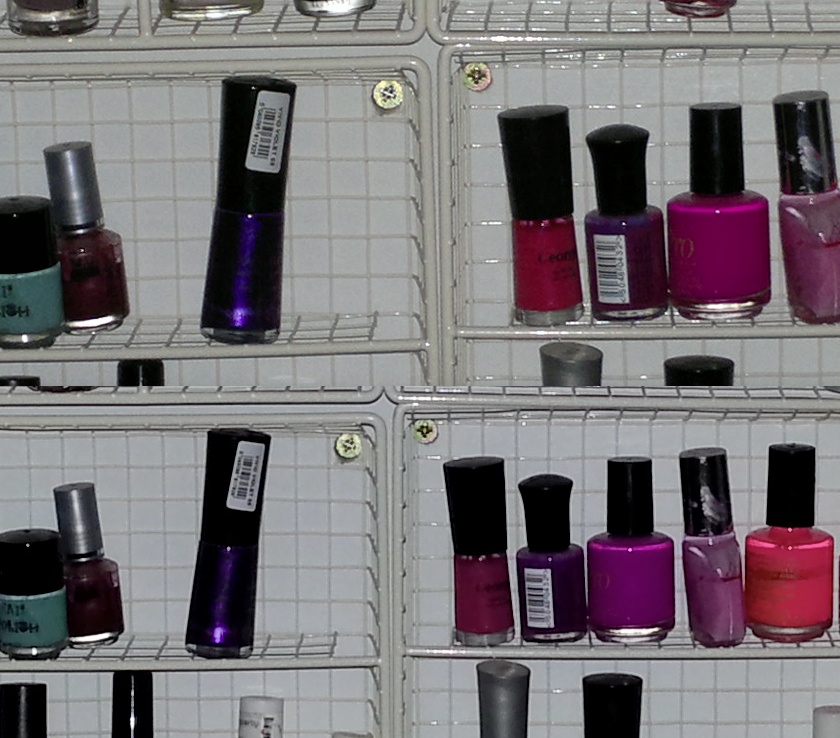
Impressively, the single LED flash in the Galaxy S III got very close to the Xenon shot of the N8 and you have to be very picky to notice differences in the two image crops. For static subjects, I think current sensors may now be good enough for low light shots after all?
However....
Flash-lit, moving subject
Most real world flash shots are of people, so I got someone to snap me with each phone while I 'jigged' gently, as if chatting and dancing at a party:

With the same scene captured on the Nokia N8 and Samsung Galaxy S III, I now cropped in to an appropriate level of detail such that we can see a difference in the shots. N8 on top, SGS III on the bottom:
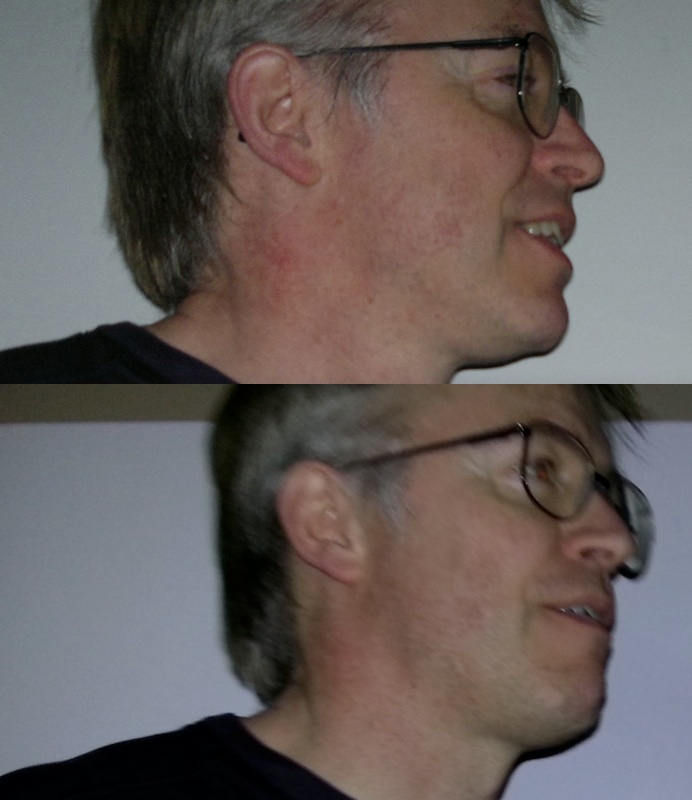
Unsurprisingly, the Xenon flash on the Nokia N8 freezes the moment well and my face is crisp and reasonably well lit, while the LED flash on the Galaxy S III (roughly a hundred times slower and about four times less powerful) struggles, producing a blurred image, typical of LED flashes on almost all smartphones these days.
The difference is night and day (almost literally), but I won't repeat my Xenon-flash-for-all campaign yet again..... 8-)
Summary
I drew ire for my new posting of a CNet comparison between the cameras of the iPhone 4S and Nokia 808 the other day, but there's a case to be made that the majority of phone-shot photos do get viewed on the phone itself and then viewed on Facebook or Instagram or similar, in which case there's no real difference between photos from any of these phones most of the time. In fact, the iPhone and Galaxy cameras, with their artificial boosting of colours and sharpness, generally produce images which are more attractive at these resolutions.
But, for the connoisseur, for anyone who wants to do things with their photos, there's no getting away from the laws of physics. The N8, almost two years old, still has a camera that's three times bigger than the 2012 competition and with a flash that's a hundred times faster and four times more powerful. Not surprisingly, the photos that come out of it still rule the mobile photography world.
At least until the 808 arrives, arguably even more of a camera-specialist smartphone than the N8, and which raises the bar yet again.
PS. Note to comment trolls - I'm in no way comparing general functionality of the N8 and Galaxy S III, see my more contemporary 808 vs SGS III article for a hint into how that might turn out!
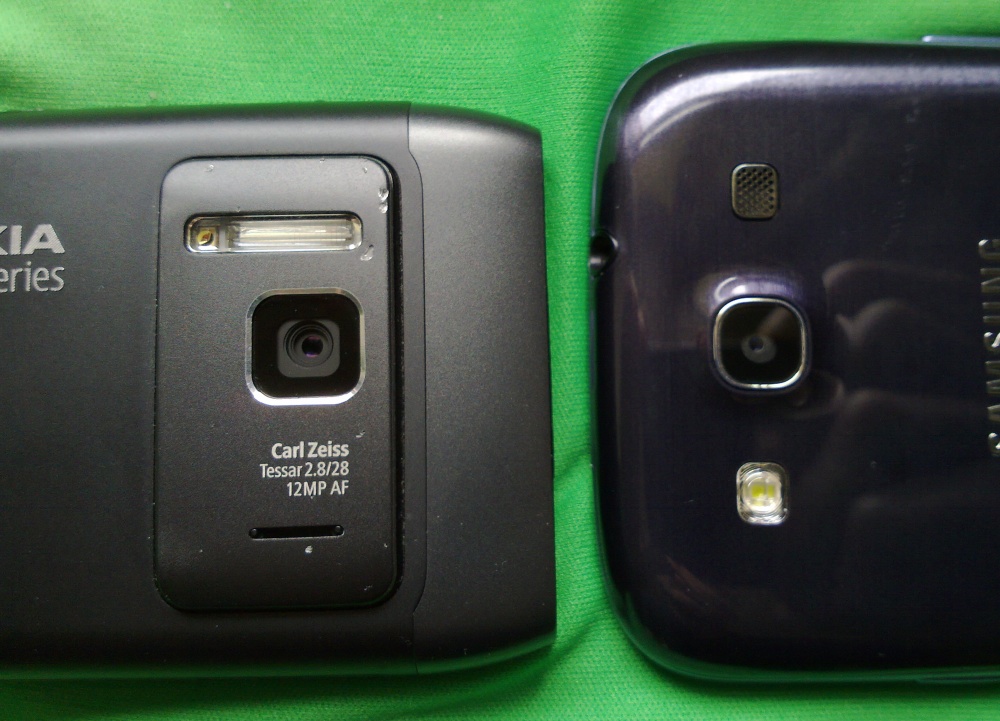
No hay comentarios:
Publicar un comentario